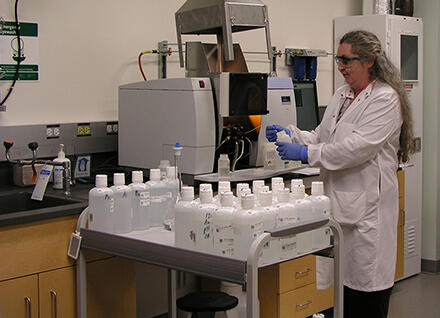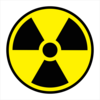
The Vermont Department of Health Laboratory provides chemical, radiological and microbiological tests for swim and agricultural water contamination, radon in air and water, emergency responses, Vermont Yankee monitoring, and for other public health-related activities.
Environmental testing available to the public includes bacteria testing for swim and irrigation water, and radon in air and water testing.
Bacteria testing for swim and agricultural water counts the numbers of E. coli present. E. coli can cause diarrhea, urinary tract infections, respiratory illness, pneumonia, and other illnesses. E. coli bacterium comes from human or animal waste.
Public Environmental Water Testing

E. coli in recreational (swimming) waters
Water samples from ponds, lakes and rivers are tested for Escherichia coli, commonly known as E. coli, to determine whether it is suitable for swimming. The Vermont Department of Health Laboratory’s swim water test counts the numbers of E. coli to determine its suitability for swimming. Swim water should have less than 235 E. coli organisms per 100 ml of water to be considered suitable for swimming.
- Municipal or non-profit managed public swimming areas should be monitored regularly according to the Vermont Department of Health’s Healthy Recreational Waters Guidelines.
- Individuals may use this test to determine the safety of swimming areas on their property, or lake frontage.
- The VDHL offers Kit SW to test swim waters. It provides counts of E. coli up to 2000 MPN/100 ml.
See more information from the Department of Health on healthy recreational water.
View the current test results from the Vermont State Parks Swimming Information Page.
E. coli in agricultural or irrigation waters
Water samples from ponds, lakes, rivers, and private wells are tested for E. coli to determine whether it is suitable for irrigation purposes. The Vermont Department of Health Laboratory’s irrigation water test counts the numbers of E. coli to determine its suitability for irrigation. Vermont guidelines for agricultural waters used for irrigation, frost protection, and fertilizer application are based on the Environmental Protection Agency’s recommendations for recreational (swimming) water. Irrigation waters should not exceed 235 CFU/100 ml for E. coli.
The VDHL offers Kit AG to test irrigation waters. This test provides counts of E.coli in irrigation water up to 2000 MPN/100 ml.
Guidelines from the Health Department on agricultural water sources.
For more information on irrigation from the University of Vermont Extension.
Public Radon Testing

The Environmental Protection Agency (EPA) and the Surgeon General recommend testing all homes for radon in air. The EPA also recommends testing in schools.
Radon in Air Testing
The Vermont Department of Health Laboratory recommends testing your home for radon in the air. You should test your home’s air radon level:
- If it’s never been tested or radon levels are unknown
- When preparing to buy or sell a home
- Before and after any renovations, especially after making any repairs to reduce radon levels
- Before making any lifestyle changes in the home that would cause someone to spend more time in the basement or lower level (like converting a basement to a bedroom)
We offer long-, medium- and short-term test kits. We recommend that you test through at least part of a heating season. The longer the test is run, the more accurate the result will be. Learn more in the Environmental Protection Agency’s (EPA) guidance, Citizen’s Guide to Radon.
- For real estate transactions: Perform a short-term test (Kit RF). This kit includes two devices to be placed side by side for 2 – 7 days. To find out more about radon testing for real estate transactions, check out the EPA’s Buyer’s and Seller’s Guide to Radon.
- All other tests: Perform a long-term (3 – 12 months, Kit RH) or medium-term (1-3 months, Kit RG) test. Testing during part of a heating season will produce more accurate results.
Radon in Water Testing
If you have well water and received a radon in air test result of greater than 4 pCi/L (EPA Action Level), consider testing for radon in water (Kit RC).
For more information, visit the Vermont Radon Program’s webpage.
EPA information about mitigation for radon in air can be found in the EPA’s Citizen’s Guide to Radon Reduction.
